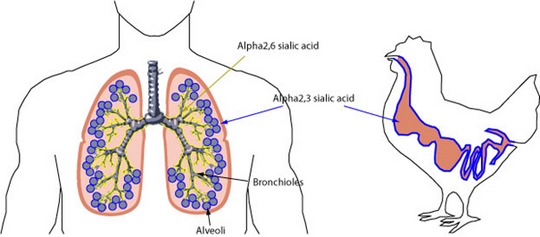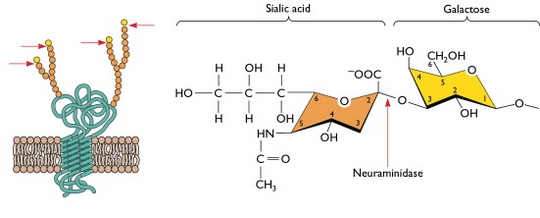

Důkazem vysokého vzdělání je schopnost mluvit o největších věcech nejjednodušším způsobem.
David Hume
Výzkum
MOLECULAR BIOLOGY OF Β ESTRADIOL-ESTROGEN RECEPTOR COMPLEX BINDING TO ESTROGEN RESPONSE ELEMENT AND THE EFFECT ON CELL PROLIFERATION
 Estrogenic compounds related to Endocrine Disrupting Compounds (EDC) belong to pollutants gaining the increasing environmental and social concerns in recent years because of their endocrine-disrupting property and other serious side effects on human health (Ballesteros-Gomez et al. 2009; Liu et al. 2004; Swedenborg et al. 2009). With the rapid economy development, a variety of EDCs have been discharged into the aquatic environment (Jeffries et al. 2011), received in large amounts in the urine and excreta of livestock (Tang et al. 2013) but also in the urine of people that contains residues of contraceptives, whose consumption increases every year (Preda et al. 2012; Qiang et al. 2013). Estrogenic pollutants, among which the highest activity was reported at ß estradiol (E2) (Boulay & Perdiz 2005; Heldring et al. 2007) are characterized by the fact that even at very low concentrations, the long-term exposure can cause xenoestrogenic effects (Lange et al. 2012; Qin et al. 2013b). Sewage treatment plants currently do not have a way how to effectively break down these substances from the water. Although a certain amount of these substances remains bound in the sludge (Gagne et al. 2013), the rest is released into the receiving waters of the sewage treatment plant (Jenkins et al. 2012). Their adverse effects are caused through the endocrine system by mimicking the action of natural hormones (Bovet et al. 2009). As EDCs disrupt the actions of endogenous hormones, they may induce abnormal reproduction, stimulation of cancer growth, dysfunction of neuronal and immune systems (Lee et al. 2013; Tang et al. 2013; Howdeshell et al. 2008; Macon & Fenton 2013; Jenkins et al. 2012). Estrogens provide gene transcription and signaling of plenty processes in cell in a variety of tissues, the bone, breast, and endometrium, through binding and activation of estrogen receptors (ERs) (Komm & Mirkin 2013). Because breast cancer is the most common cancer in women, both in developed and developing countries (van Duursen et al. 2013), the issue of reproductive toxicants is a major scientific challenge for human health (Bechi et al. 2013). The aims of this review are to summarize the facts about the molecular biological principles of estradiol pathways in complex with estrogen receptor, its binding with estrogen response element and its effect on target genes involved in cell proliferation.
Estrogenic compounds related to Endocrine Disrupting Compounds (EDC) belong to pollutants gaining the increasing environmental and social concerns in recent years because of their endocrine-disrupting property and other serious side effects on human health (Ballesteros-Gomez et al. 2009; Liu et al. 2004; Swedenborg et al. 2009). With the rapid economy development, a variety of EDCs have been discharged into the aquatic environment (Jeffries et al. 2011), received in large amounts in the urine and excreta of livestock (Tang et al. 2013) but also in the urine of people that contains residues of contraceptives, whose consumption increases every year (Preda et al. 2012; Qiang et al. 2013). Estrogenic pollutants, among which the highest activity was reported at ß estradiol (E2) (Boulay & Perdiz 2005; Heldring et al. 2007) are characterized by the fact that even at very low concentrations, the long-term exposure can cause xenoestrogenic effects (Lange et al. 2012; Qin et al. 2013b). Sewage treatment plants currently do not have a way how to effectively break down these substances from the water. Although a certain amount of these substances remains bound in the sludge (Gagne et al. 2013), the rest is released into the receiving waters of the sewage treatment plant (Jenkins et al. 2012). Their adverse effects are caused through the endocrine system by mimicking the action of natural hormones (Bovet et al. 2009). As EDCs disrupt the actions of endogenous hormones, they may induce abnormal reproduction, stimulation of cancer growth, dysfunction of neuronal and immune systems (Lee et al. 2013; Tang et al. 2013; Howdeshell et al. 2008; Macon & Fenton 2013; Jenkins et al. 2012). Estrogens provide gene transcription and signaling of plenty processes in cell in a variety of tissues, the bone, breast, and endometrium, through binding and activation of estrogen receptors (ERs) (Komm & Mirkin 2013). Because breast cancer is the most common cancer in women, both in developed and developing countries (van Duursen et al. 2013), the issue of reproductive toxicants is a major scientific challenge for human health (Bechi et al. 2013). The aims of this review are to summarize the facts about the molecular biological principles of estradiol pathways in complex with estrogen receptor, its binding with estrogen response element and its effect on target genes involved in cell proliferation.
 Currently, research covering this issue is applied especially to clarify the relationship between estradiol (Fig. 1), estrogen response element (ERE) and estrogen receptor (ER), a member of hormone receptors of the nuclear receptor family (Gronemeyer et al. 2004; Srinivasan et al. 2013). There are known two subtypes of estrogen receptors ER? and ERß (Chieffi & Chieffi 2013; Muyan et al. 2012; Oh & Chung 2013) encoded by distinct genes, Esr1 and Esr2, respectively (Billon-Gales et al. 2011). These steroid transcription factors remain nowadays the most informative biomarker in breast cancer diagnosis (Patani et al. 2013), because more than three quarters of breast tumors are ER?-positive (Dunnwald et al. 2007). ERs are composed of the polypeptide chain and located in the cell cytoplasm in multiprotein complex containing the molecular chaperone HSP 90 (heat shock protein 90, Fig. 1) (Cheng et al. 2012). Ligand binding triggers the conformational changes that lead to dissociation and receptor dimerization (Jeong et al. 2012). The proliferative or pro-survival action of estrogens is antagonized in most cases by retinoic acid (RA) (Ombra et al. 2013). Activated receptor-ligand complex is replaced into the nucleus of cell, where interactions with coactivators (CoA) or corepressors (CoR) of transcription are undergoing (McDonnell & Wardell 2010; Coughlan et al. 2013).
Currently, research covering this issue is applied especially to clarify the relationship between estradiol (Fig. 1), estrogen response element (ERE) and estrogen receptor (ER), a member of hormone receptors of the nuclear receptor family (Gronemeyer et al. 2004; Srinivasan et al. 2013). There are known two subtypes of estrogen receptors ER? and ERß (Chieffi & Chieffi 2013; Muyan et al. 2012; Oh & Chung 2013) encoded by distinct genes, Esr1 and Esr2, respectively (Billon-Gales et al. 2011). These steroid transcription factors remain nowadays the most informative biomarker in breast cancer diagnosis (Patani et al. 2013), because more than three quarters of breast tumors are ER?-positive (Dunnwald et al. 2007). ERs are composed of the polypeptide chain and located in the cell cytoplasm in multiprotein complex containing the molecular chaperone HSP 90 (heat shock protein 90, Fig. 1) (Cheng et al. 2012). Ligand binding triggers the conformational changes that lead to dissociation and receptor dimerization (Jeong et al. 2012). The proliferative or pro-survival action of estrogens is antagonized in most cases by retinoic acid (RA) (Ombra et al. 2013). Activated receptor-ligand complex is replaced into the nucleus of cell, where interactions with coactivators (CoA) or corepressors (CoR) of transcription are undergoing (McDonnell & Wardell 2010; Coughlan et al. 2013).
Podpořeno projekty: 4/2013/FVHE
Plakáty k výzkumným směrům
Dokumenty pro VaV aktivity
Výzkumný záměr
Hodnocení výzkumných aktivit
Archív
24— 2013
23— 2013
22— 2013
21— 2013
20— 2013
19— 2013
18— 2013
17— 2013
16— 2013
15— 2013
14— 2013

 | Zemědělská 1/1665 613 00 Brno Budova D | Tel.: +420 545 133 350 Fax.: +420 545 212 044 |  |
 |





